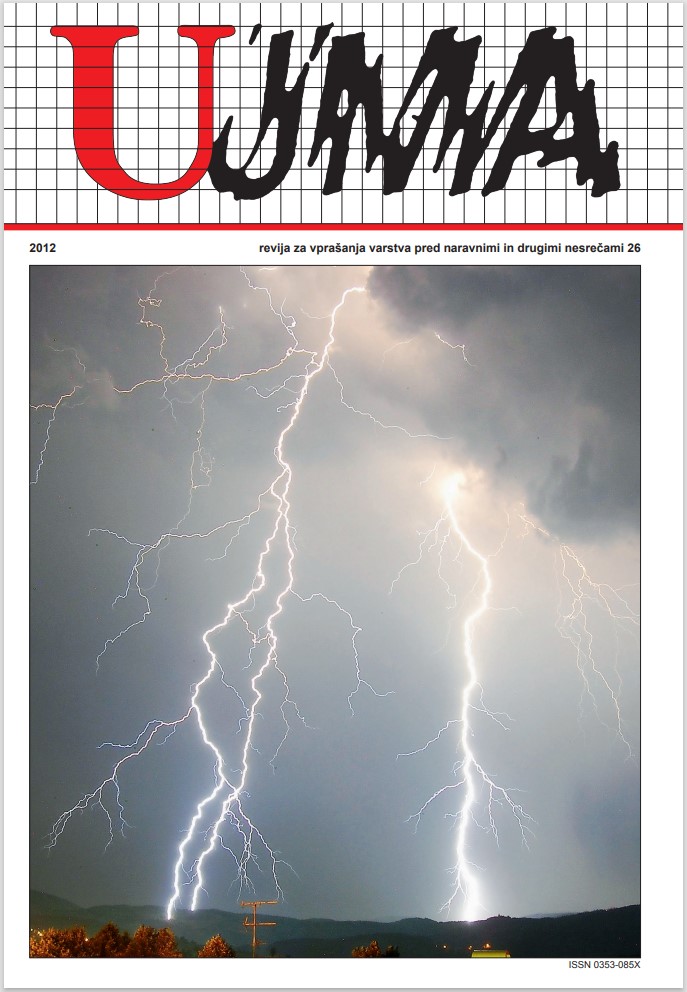INDIVIDUAL RISK IN THE SYSTEM OF NATURAL GAS TRANSMISSION PIPELINES
Abstract
In the event of damage or leakage, pipeline infrastructure presents a potential threat to the environment. Despite an extremely low probability of such an event, pipeline operators must control all potential hazards that may occur in the event of an incident fracture or damage to a gas pipeline. It is therefore necessary to ensure that the risk presented by such a pipeline in populated areas is low or within the limits prescribed by law or specific requirements of the pipeline operator. Risk assessment can be obtained using appropriate analytical models which, based on physical relations, existing statistical databases, mechanistic and probabilistic approaches, and numerical simulations, allow quantitative assessment of the consequences of pipeline incidents and their estimated frequency. With regard to this it is important to ensure continued development of new approaches and risk assessment methodologies which must be based on local experience and pipeline characteristics, and represent constant upgrading of the existing model. Better integration of the model into local conditions increases the reliability of risk assessment. Based on analysis results it is then possible to determine whether the risk in a selected section of a pipeline route falls within the permissible values. If the risk is too high, it is necessary to identify the causes for this, and introduce additional protective measures to ensure that the level of risk in a selected pipeline section no longer exceeds the permissible values. Types of protective measures for the reduction of risks are widely known and used depending on the possible cause of pipeline damage.
References
ASME, 2004. Gas Transmission and Distribution Piping Systems, ASME B31.8:2004.
Bajcar, T., Cimerman, F., Širok, B., Eberlinc, M., 2010. Probabilistic assessment of frequency of hazardous events on natural gas pipelines due to landslides. Oil, gas (Hambg.), 36, 89–93.
Bajcar, T., Širok, B., Cimerman, F., Eberlinc, M., 2008. Quantification of impact of line markers on risk on transmission pipelines with natural gas. Journal of Loss Prevention in the Process Industries 21, 613–619.
Corder, I., 1995. The application of risk techniques to the design and operation of pipelines. Inst Mech Eng Conf Trans. 4, 113–126.
CPR 18E Purple Book, Guideline for Quantitative Risk Assessment, Committee for the Prevention of Disasters, The Netherlands, 1999.
CSChE, 2004. Risk Assessment – Recommended Practices for Municipalities and Industry. Canadian Society for Chemical Engineering, Ottawa.
EGIG, 2011. Gas Pipeline Incidents 8th Report 1970– 2010.
Hüwener, T., Watzka, H., Linke, G., Kutsch, F., Ahlers, M., Steiner, M., 2007. Inline Inspection from an Operator’s Point of View. 3R International Special edition, No. 2.
Jager, E., Kuik, R., Stallenberg, G., Zantig, J. A., 2003. Qualitative Risk Assessment of the Gastransport Services Pipeline System Network Based on GIS Data, Gasunie Research.
Jo, Y.-D., Ahn, B. J., 2005. A method of quantitative risk assessment for transmission pipeline carrying natural gas. Journal of Hazardous Materials A123, 1–12.
Mather, J., Blackmore, C., Petrie, A., Treves, C., 2001. An assessment of measures in use for gas pipelines to mitigate against damage caused by third party activity. Contract Research Report 372/2001, Health and Safety Executive.
Pravilnik o tehničnih pogojih za graditev, obratovanje in vzdrževanje plinovodov z delovnim tlakom nad 16 bar ter o pogojih za posege v območjih njihovih varovalnih pasov, Uradni list RS, št. 12/2010.
Downloads
Published
Issue
Section
License

This work is licensed under a Creative Commons Attribution-NonCommercial-NoDerivatives 4.0 International License.
The articles are made available to the public under Creative Commons Attribution-NonCommercial-NoDerivatives 4.0 International (CC BY-NC-ND 4.0).


